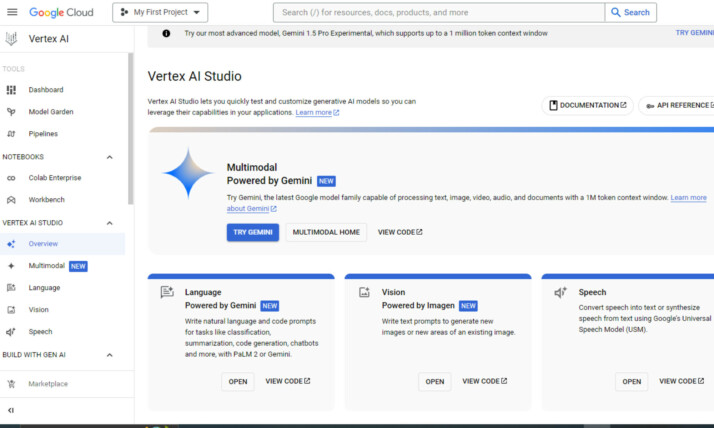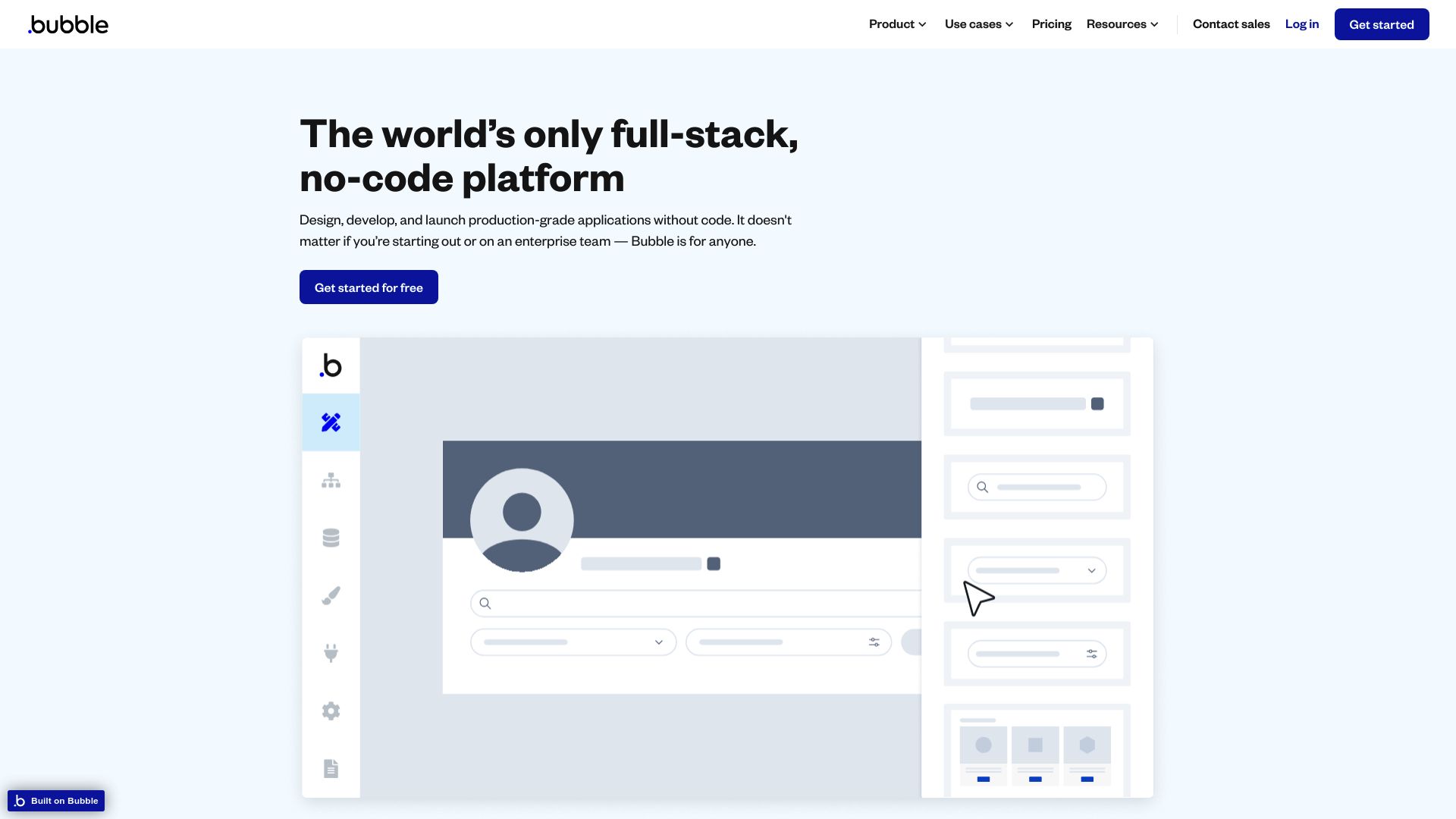Vertex AI vs. Bubble: Bridging the Gap with SmythOS
AI development platforms are revolutionizing how businesses create and deploy intelligent solutions. This comparison explores Vertex AI vs. Bubble, and SmythOS, three distinct approaches to AI and application development. Vertex AI offers advanced machine learning tools for experienced developers, while Bubble focuses on no-code web application creation. SmythOS emerges as a powerful alternative, combining intuitive design with sophisticated AI capabilities. We’ll examine how each platform addresses key needs like model customization, deployment flexibility, and integration capabilities. Whether you’re a seasoned data scientist, a non-technical entrepreneur, or somewhere in between, this guide will help you navigate the strengths and limitations of these platforms to find the best fit for your AI development needs.
Vertex AI Overview
Vertex AI transforms machine learning development with a comprehensive suite of tools for building, deploying, and managing AI models at scale. Google’s platform integrates cutting-edge technologies like the multimodal Gemini model, enabling developers to create sophisticated AI applications that understand and process various data types.
Vertex AI’s strength lies in its end-to-end ML workflow support. The platform offers a Model Garden, featuring Google’s proprietary models and select open-source options, alongside tools for model customization and fine-tuning. This flexibility allows developers to tailor AI solutions to specific business needs efficiently.


Vertex AI’s strength lies in its end-to-end ML workflow support … allowing developers to tailor AI solutions to specific business needs efficiently.
The platform excels in enterprise-grade features, providing robust MLOps capabilities, including a centralized model registry and feature store. These tools streamline the deployment and management of ML models in production environments, ensuring scalability and reliability. Vertex AI also prioritizes explainability with its Explainable AI feature, addressing the growing demand for transparency in AI decision-making processes.
Despite its powerful capabilities, Vertex AI’s learning curve may be steep for users without a strong technical background. The platform primarily caters to experienced developers and data scientists, potentially limiting accessibility for non-technical team members. Additionally, while Vertex AI offers extensive customization options, it may require significant investment in time and resources to fully leverage its advanced features.
Vertex AI’s integration capabilities stand out, offering seamless connections with Google Cloud’s ecosystem and support for various APIs and external tools. This interoperability enables developers to build comprehensive AI solutions that leverage existing infrastructure and data sources. As AI continues to evolve, Vertex AI positions itself as a frontrunner in the competitive landscape, offering a robust foundation for organizations looking to harness the power of machine learning and AI at scale.
Bubble Overview
Bubble empowers users to create web applications without coding expertise. This visual development platform combines drag-and-drop interfaces with powerful backend capabilities, enabling rapid creation of complex, database-driven applications.
Bubble’s no-code approach democratizes web development, allowing entrepreneurs, business professionals, and aspiring developers to bring their ideas to life. The platform’s visual editor simplifies the creation of user interfaces, while its logic builder enables the implementation of complex business rules and workflows.
Bubble empowers users to create web applications without coding expertise. This visual development platform combines drag-and-drop interfaces with powerful backend capabilities…


Key features include database management, user authentication, and third-party integrations. Bubble supports the development of responsive designs, ensuring applications work seamlessly across devices. The platform also offers deployment options, allowing users to host their applications on Bubble’s infrastructure or export them for custom hosting.
While Bubble excels in rapid prototyping and building MVPs, it faces limitations in handling extremely large-scale applications or those requiring highly specialized functionalities. The platform’s reliance on its proprietary system can also pose challenges for developers accustomed to traditional coding environments.
Bubble’s ecosystem includes a marketplace of plugins and templates, expanding its capabilities and accelerating development. The platform’s commitment to ongoing improvement and its active community contribute to its growing popularity among non-technical founders and citizen developers.
Feature Comparison
Vertex AI and Bubble represent distinct approaches to AI and application development, with significant differences in their core capabilities and target use cases.
Vertex AI excels in providing advanced machine learning and AI model development tools. It offers a comprehensive suite for training, deploying, and managing AI models at scale. Vertex AI’s strength lies in its support for sophisticated AI workflows, including multimodal AI with models like Gemini, and robust MLOps features for enterprise-grade deployments. However, Vertex AI requires substantial technical expertise, primarily catering to experienced developers and data scientists.
In contrast, Bubble focuses on no-code web application development, empowering users to create functional web apps without programming knowledge. While Bubble offers AI integrations through plugins and API connectors, it lacks the depth of native AI capabilities found in Vertex AI. Bubble’s visual interface and drag-and-drop functionality make it highly accessible for non-technical users, but this ease of use comes at the cost of advanced AI model customization and deployment options.
The platforms diverge significantly in their approach to security and scalability. Vertex AI provides enterprise-level security features, including data encryption, OAuth support, and IP control, crucial for handling sensitive data in AI applications. Bubble offers basic security measures but may not match the comprehensive security suite of Vertex AI, particularly for large-scale, data-intensive AI projects.
SmythOS bridges these gaps, combining the accessibility of no-code platforms with advanced AI capabilities. It offers a visual builder for creating sophisticated AI agents, supports multimodal interactions, and provides robust security features. SmythOS’s ability to deploy AI as APIs, chatbots, or scheduled agents, coupled with its scalability and integration capabilities, positions it as a versatile solution that addresses limitations found in both Vertex AI and Bubble.
Feature Comparison Table
| Vertex AI | Bubble | SmythOS | |
|---|---|---|---|
| CORE FEATURES | |||
| No-Code Options | ❌ | ✅ | ✅ |
| Memory & Context | ✅ | ❌ | ✅ |
| Autonomous Agents | ✅ | ❌ | ✅ |
| Explainability & Transparency | ✅ | ❌ | ✅ |
| Multimodal | ✅ | ❌ | ✅ |
| Multi-Agent Collaboration | ✅ | ❌ | ✅ |
| Audit Logs for Analytics | ❌ | ✅ | ✅ |
| Bulk Work | ✅ | ❌ | ✅ |
| Agent Work Scheduler | ✅ | ❌ | ✅ |
| SECURITY | |||
| Constrained Alignment | ✅ | ❌ | ✅ |
| IP Control | ✅ | ❌ | ✅ |
| COMPONENTS | |||
| Huggingface AIs | ❌ | ❌ | ✅ |
| Zapier APIs | ❌ | ✅ | ✅ |
| Classifiers | ✅ | ❌ | ✅ |
| DEPLOYMENT OPTIONS (EMBODIMENTS) | |||
| Deploy as API | ✅ | ❌ | ✅ |
| Deploy as Scheduled Agent | ✅ | ❌ | ✅ |
| DATA LAKE SUPPORT | |||
| Hosted Vector Database | ✅ | ❌ | ✅ |
| Sitemap Crawler | ❌ | ❌ | ✅ |
| YouTube Transcript Crawler | ❌ | ❌ | ✅ |
| URL Crawler | ✅ | ❌ | ✅ |
Best Alternative to Vertex AI and Bubble
SmythOS emerges as a superior alternative to Vertex AI and Bubble, offering a unique blend of advanced AI capabilities and user-friendly design. We combine the power of sophisticated AI with intuitive no-code tools, making AI agent development accessible to a wider audience.
Our platform stands out for its ease of use, comprehensive feature set, and unlimited use cases. Unlike Vertex AI, which requires significant technical expertise, or Bubble, which lacks advanced AI capabilities, SmythOS bridges this gap by providing a visual builder for creating complex AI agents without extensive coding knowledge.
SmythOS excels in areas where Vertex AI and Bubble fall short. We offer multimodal support, allowing agents to handle various types of data including text, images, and audio.
SmythOS excels in areas where Vertex AI and Bubble fall short. We offer multimodal support, allowing agents to handle various types of data including text, images, and audio. Our platform supports autonomous agents and multi-agent collaboration, features not available in Bubble and more advanced than Vertex AI’s offerings. Additionally, we provide robust security features, including data encryption and OAuth support, matching enterprise-level requirements.
Unlike Bubble’s limited AI integrations, SmythOS offers native support for a wide range of AI models and seamless API integrations. We provide pre-built components and templates, significantly reducing development time while maintaining flexibility for customization. Our platform also offers versatile deployment options, including APIs, chatbots, and scheduled agents, surpassing the deployment capabilities of both Vertex AI and Bubble.
By choosing SmythOS, users gain access to a comprehensive AI development environment that combines the best of both worlds — advanced AI capabilities and user-friendly design.
By choosing SmythOS, users gain access to a comprehensive AI development environment that combines the best of both worlds — advanced AI capabilities and user-friendly design. We empower businesses and developers to create sophisticated AI solutions efficiently, driving innovation and productivity across various industries.
Conclusion
Vertex AI, Bubble, and SmythOS each offer unique approaches to AI and application development, catering to different user needs and technical expertise levels. Vertex AI excels in providing advanced machine learning tools for experienced developers, while Bubble focuses on no-code web application development for non-technical users. SmythOS, however, strikes a balance between these approaches, offering a powerful yet accessible platform for AI agent creation and deployment.
SmythOS stands out with its intuitive drag-and-drop interface, extensive integration ecosystem, and versatile deployment options. Unlike Vertex AI’s steep learning curve or Bubble’s limitations in advanced AI capabilities, SmythOS empowers users to create sophisticated AI agents without extensive coding knowledge. Its support for multimodal interactions, problem-solving capabilities, and seamless integration with over 300,000 APIs and tools positions it as a comprehensive solution for businesses looking to leverage AI effectively.
While Vertex AI and Bubble have their strengths in specific scenarios, SmythOS offers a more holistic approach to AI development and deployment. Its ability to create once and deploy anywhere, coupled with features like autonomous agents, multi-agent collaboration, and robust security measures, makes it an ideal choice for businesses seeking to innovate and automate at scale.
For those ready to explore the future of AI development and deployment, we invite you to discover game-changing AI templates and create a free SmythOS account. Experience firsthand how SmythOS can revolutionize your approach to AI, offering unparalleled flexibility, power, and ease of use in creating and managing AI agents for your business needs.
Last updated:
Disclaimer: The information presented in this article is for general informational purposes only and is provided as is. While we strive to keep the content up-to-date and accurate, we make no representations or warranties of any kind, express or implied, about the completeness, accuracy, reliability, suitability, or availability of the information contained in this article.
Any reliance you place on such information is strictly at your own risk. We reserve the right to make additions, deletions, or modifications to the contents of this article at any time without prior notice.
In no event will we be liable for any loss or damage including without limitation, indirect or consequential loss or damage, or any loss or damage whatsoever arising from loss of data, profits, or any other loss not specified herein arising out of, or in connection with, the use of this article.
Despite our best efforts, this article may contain oversights, errors, or omissions. If you notice any inaccuracies or have concerns about the content, please report them through our content feedback form. Your input helps us maintain the quality and reliability of our information.
